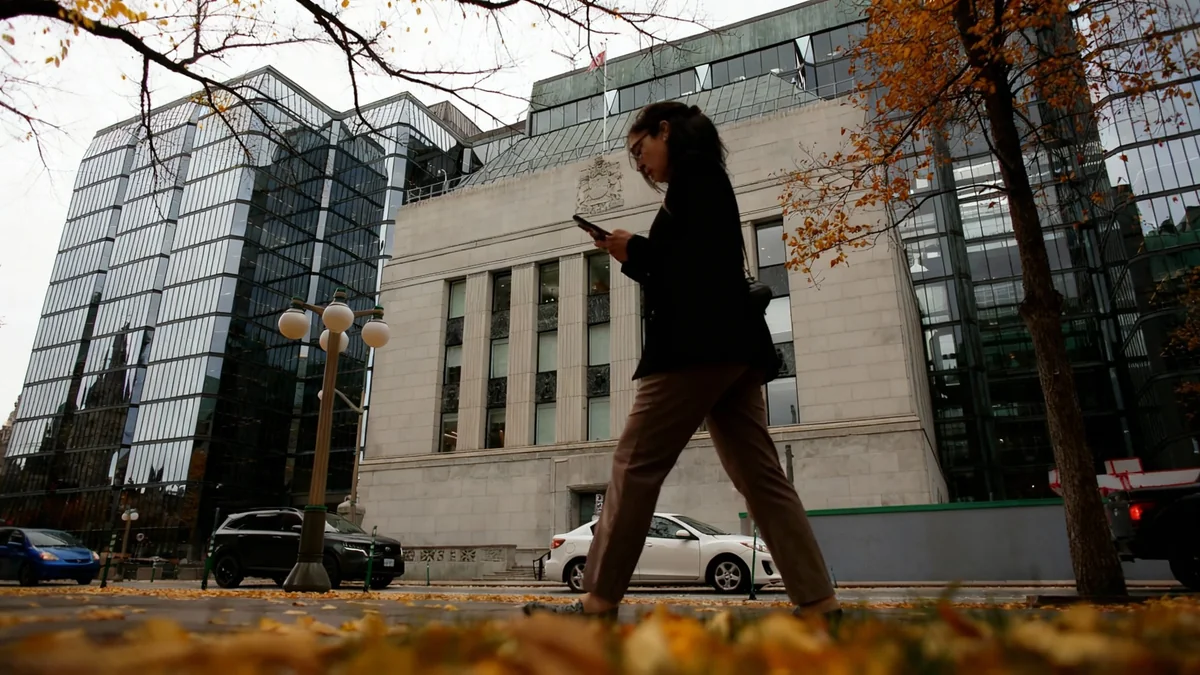Former President Donald Trump has positioned the U.S. as a future "bitcoin superpower," suggesting that cryptocurrencies can alleviate pressure on the U.S. dollar. However, this endorsement highlights a fundamental economic conflict, as a stronger dollar has historically correlated with weaker Bitcoin prices, creating a complex paradox for policymakers and investors.
Speaking at the America Business Forum in Miami on November 5, 2025, Trump claimed his administration's approach ended a "war on crypto," contrasting it with what he described as the current enforcement-heavy regulatory environment. His comments come amid growing discussions in Washington about integrating digital assets, including stablecoins and a potential Strategic Bitcoin Reserve, into the nation's financial framework.
Key Takeaways
- Donald Trump advocated for crypto as a way to ease pressure on the U.S. dollar, aiming to make the U.S. the "crypto capital of the world."
- Market data reveals a strong inverse correlation between Bitcoin and the U.S. Dollar Index (DXY), where a rising dollar often suppresses Bitcoin's value.
- Discussions are underway for a U.S. Strategic Bitcoin Reserve, potentially starting with over 130,000 BTC from government forfeitures.
- Recent economic data showing U.S. strength has bolstered the dollar, simultaneously capping Bitcoin's price momentum, illustrating the market tension.
The Dollar-Bitcoin Paradox
During his speech to thousands in Miami, Trump framed crypto adoption as a strategic economic move. He suggested that digital assets could serve as a relief valve for the U.S. dollar while cementing America's leadership in both cryptocurrency and artificial intelligence. This vision, however, runs into a significant hurdle observed in financial markets: the inverse relationship between Bitcoin and the U.S. dollar.
Historically, Bitcoin has performed best when the dollar is weak. Investors often turn to assets like Bitcoin as a hedge against fiat currency devaluation. Conversely, when the dollar strengthens, capital tends to flow back into dollar-denominated assets, reducing demand for riskier alternatives like cryptocurrencies.
A Strong Inverse Correlation
The historical correlation between Bitcoin and the U.S. Dollar Index (DXY) is approximately -0.7. A correlation of -1.0 would mean they move in perfectly opposite directions. This strong negative relationship indicates that factors strengthening the dollar are typically detrimental to Bitcoin's price.
This dynamic was clearly demonstrated during the Federal Reserve's aggressive interest rate hikes in 2022. As the Fed tightened monetary policy, the DXY surged to a peak of 114. In the same period, Bitcoin's price collapsed from around $47,000 to below $17,000. In contrast, the 2020-2021 period of monetary easing saw a weaker dollar coincide with Bitcoin's rally to its then-record high near $64,000.
If cryptocurrencies were to genuinely reduce pressure on the dollar as Trump suggests, it would imply a stronger, more stable dollar. According to established market behavior, this scenario would likely create headwinds for Bitcoin, not support its growth. This presents a policy paradox: measures intended to bolster the crypto ecosystem could inadvertently strengthen the very asset that often suppresses its value.
Washington's Growing Interest in Digital Assets
Despite the market contradictions, the push for crypto integration in Washington is gaining momentum. The concept of a Strategic Bitcoin Reserve has been championed by figures like Senator Cynthia Lummis, who sees it as a viable way to address the nation's $35 trillion debt.
Senator Lummis recently called a Strategic Bitcoin Reserve “the only path“ to meaningfully offset America’s debt burden, praising the Trump administration for embracing the concept.
The administration has reportedly tasked Treasury Secretary Scott Bessent with exploring how such a reserve could be structured. A fact sheet from March indicated that an initial reserve could be funded with over 130,000 BTC (valued at approximately $34 billion) that the government already holds from criminal forfeitures, meaning it would not require new taxpayer spending.
The Role of Stablecoins
Alongside a Bitcoin reserve, stablecoins are being promoted as a tool to enhance the dollar's global dominance. Eric Trump recently suggested that stablecoins could "save the U.S. dollar" by attracting trillions in foreign capital into U.S. markets. World Liberty Financial's USD1 token was cited as an example of this potential.
However, this push is not without its critics. Prominent figures like Representative Maxine Waters and Senator Elizabeth Warren have raised concerns about potential conflicts of interest. They point out that the GENIUS Act, a stablecoin framework signed in July, lacks provisions to prevent the president or their family from personally profiting from these financial instruments.
Market Realities Underscore the Tension
Recent market activity provides a real-time illustration of the dollar-Bitcoin conflict. In late September, strong U.S. economic data, including a drop in initial jobless claims to 218,000 and an upward revision of Q2 GDP to 3.8%, sent the U.S. Dollar Index to a three-week high. At the same time, Bitcoin’s price fell below $111,000.
The pattern repeated itself this week. On Thursday, stronger-than-expected services and payroll figures pushed the dollar to a five-month peak. While Bitcoin managed a recovery to over $103,000, its upward momentum was noticeably capped by the dollar's strength.
Global Currency Pressures
The dollar's strength is partly driven by weakness in other global currencies. On November 6, Turkey's lira hit a new record low of 42.1 per dollar, marking a staggering 97% depreciation since 2010. Persistent high inflation in countries like Turkey continues to drive capital towards the relative safety of the U.S. dollar.
Traders have described the current market sentiment as a "buy the dip, sell the rip" environment for Bitcoin. Any price increases are met with quick profit-taking as the narrative of higher-for-longer interest rates keeps the dollar firm. Expectations for a Federal Reserve rate cut in December have recently fallen from 70% to 60%, further supporting Treasury yields and the dollar's elevated position.
Ultimately, while political rhetoric embraces cryptocurrency as a strategic asset, market fundamentals continue to show that Bitcoin behaves like a high-risk asset sensitive to liquidity conditions. Its path forward remains deeply intertwined with the monetary policy that dictates the strength of the U.S. dollar, creating a complex challenge for any administration aiming to champion both simultaneously.





